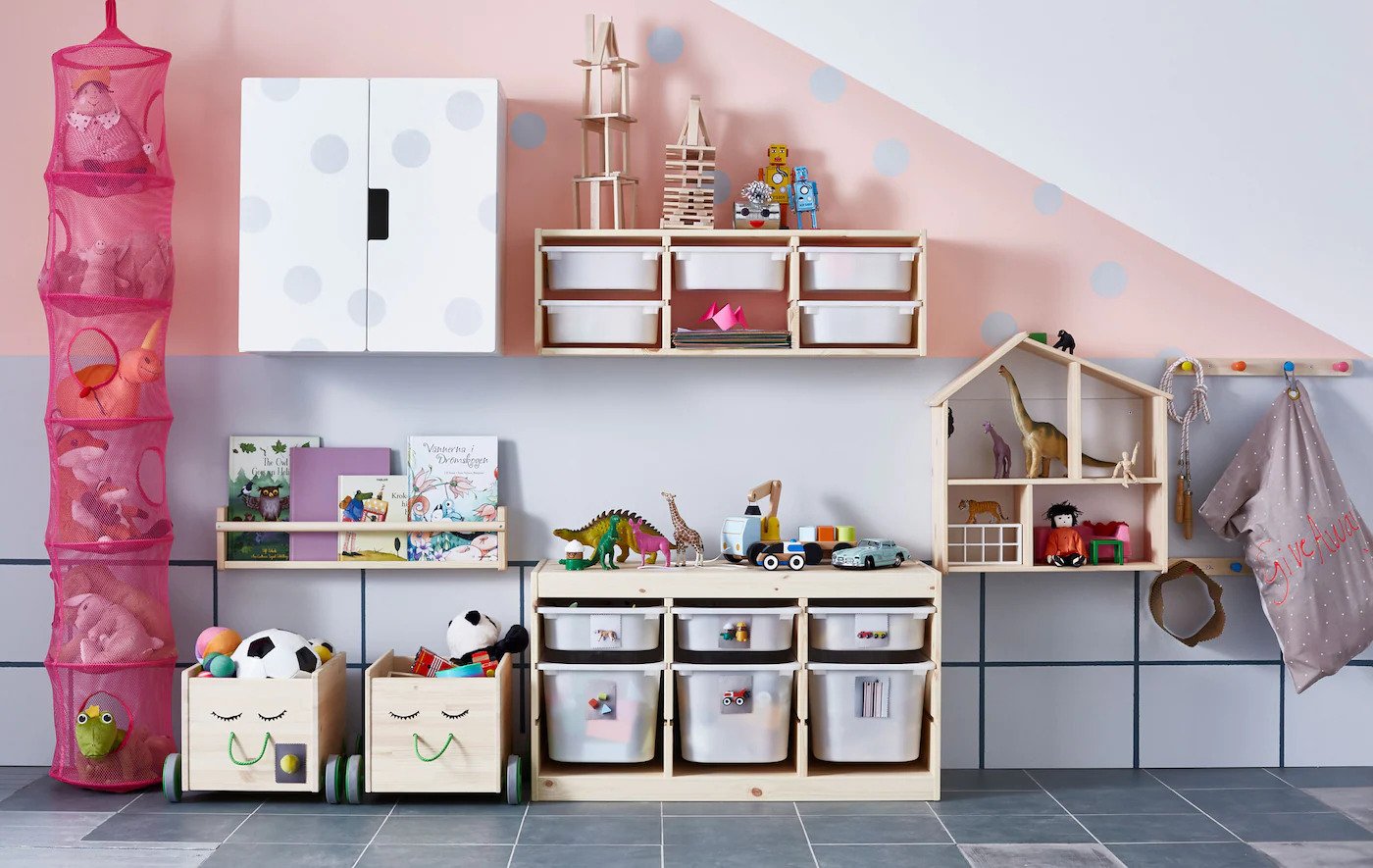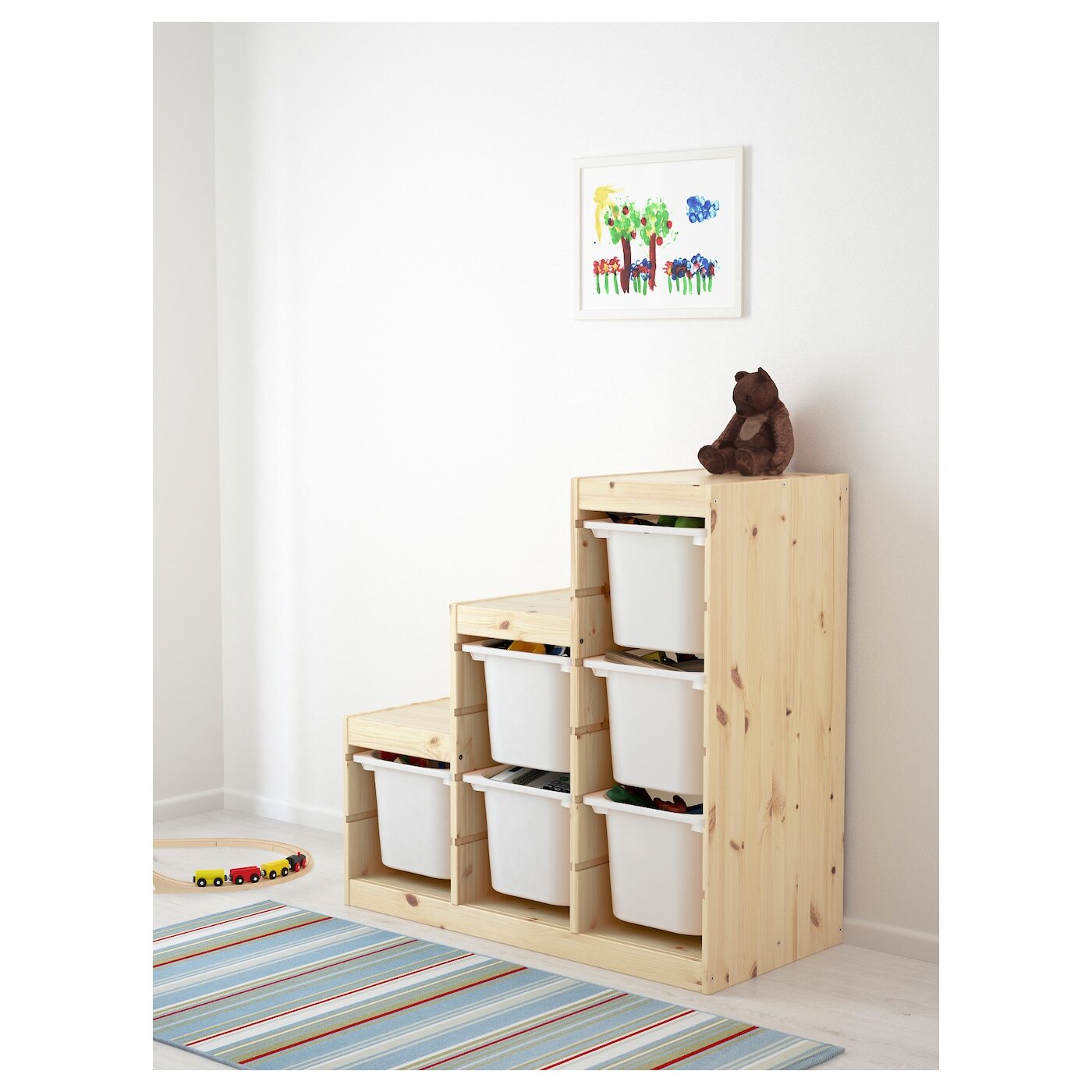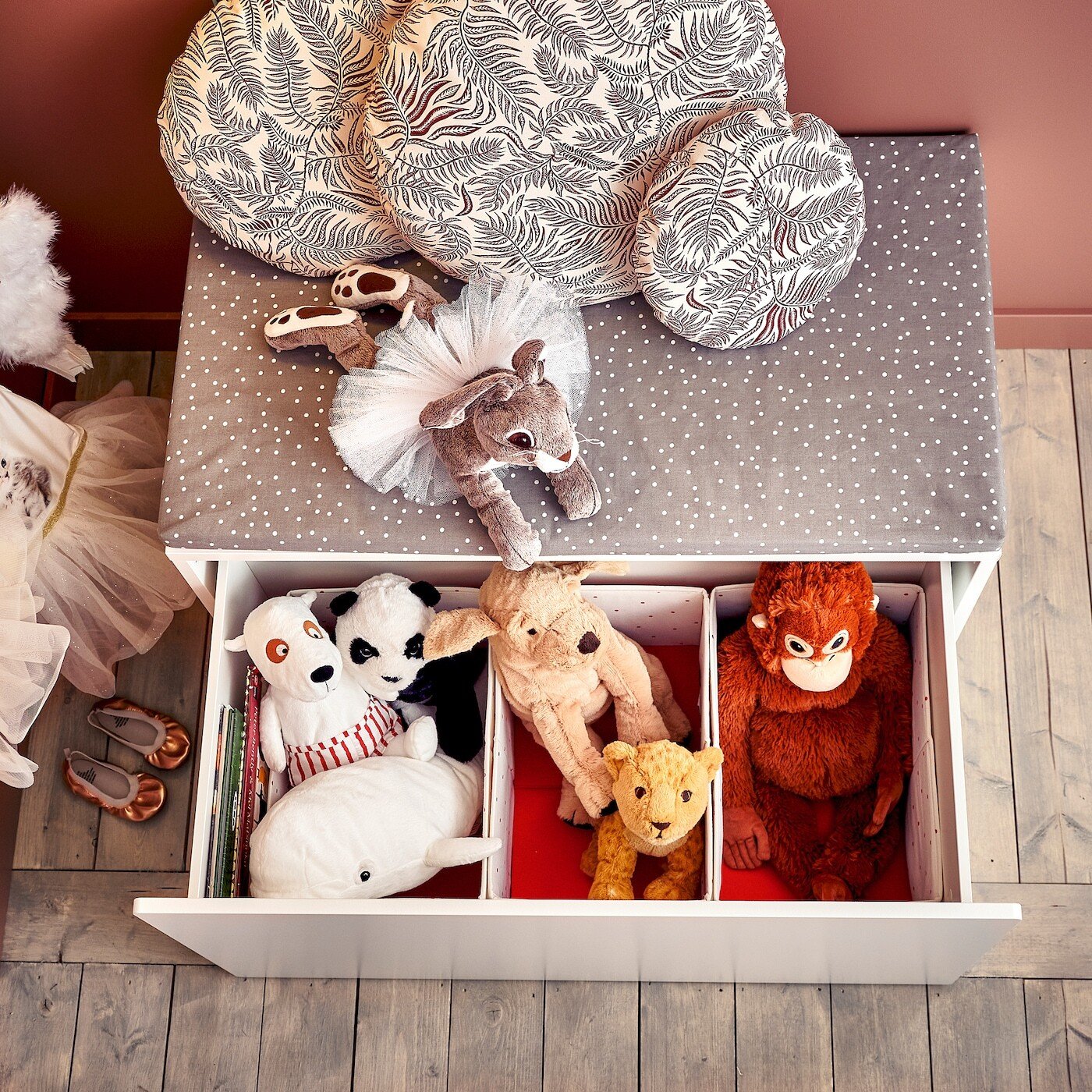How to organize toys once and for all – guided by storage experts
Organize toys in the playroom, living room and all around the home to keep playtime for kids fun but clutter-free.


It’s well known that children learn some of the most important life skills and see the greatest development through play. It's important for their mental, emotional, and physical development.
That’s all well and good—but if you have kids of your own, you know the clutter at the end of playtime can get pretty overwhelming. It's easy for them to take out toys one after the other, and the mess can pile up quickly if you don't know a good way to organize toys properly.
Toy organization ideas for a tidier home
Whether you’re looking for simple ways to keep your playroom neat and tidy or you’re hoping to find smart storage solutions that ensure your living room doesn’t look like a daycare at the end of the day... Here’s what you’ll want to do to ensure all your children’s toys stay organized, easy to access—and even easier to put away during clean up.
1. Donate the toys they don’t absolutely love
As with all the best organization ideas for the home, when it comes to toys, first think about quantity, says Ben Soreff, professional organizer at House to Home Organizing. How much time between school, activities and screens do they actually play with toys. What do they enjoy playing with? Next review all the toys, how expensive are they and how hard are they to get again? Have they outgrown them and maybe some are keepsakes and some are donates? Are they broken or missing parts?
2. Rotate toys on a regular basis
Eva Petruzziello, full time teacher and sustainability expert at Simple N Delight suggests using the basement or other child-free area for storing and rotating toys. 'Children get overwhelmed when there are too many choices,' she explains. 'Keep 3-5 fun toys available for them in their main playroom. Let them know that each toy must be tidied before accessing a new one and rotate the toys on a weekly basis for best results.'
Petruzziello suggests letting the children weigh in on what toys they would like next in the rotation; this will give them something to look forward to and will help with incentives around the house. Switching toys every 5-7 days will keep children interested and motivated.
3. Keep toys at kid level

Now that you know what you are keeping you can find the perfect system to store them. 'Toys are meant to be played with but when you store them high up or behind doors it is like they don't exist,' explains Soreff. 'Playrooms are supposed to be messy but when the time comes to clean up it should be easy.'
Get small space home decor ideas, celeb inspiration, DIY tips and more, straight to your inbox!
4. Employ furniture that doubles as storage

If you’re looking to store toys in a common area, opt for furniture that doubles as storage. 'Ottomans and benches that open up can be great spots to hide away children’s books or bins of toys,' explains Andre Kazimierski, CEO, Improovy. 'You might also consider coffee tables or end tables with drawers or cupboards.'
5. Consider decorative swings for stuffed animals

Have a stuffed animal lover/collector at home? Are those fluffy friends starting to take up way too much space? Dan Wiener, founder and lead interior designer at Homedude suggests trying to use decorative baskets to store them all—or better yet, create a stuffed animal swing. You can even hang a small hammock up to toss them in and keep them off the floor.
6. Keep LEGO under control with a designated table

“LEGO is almost always a staple in every child's toy collection. No surprise there because everyone loves them! They're fun to make, but the mess? Not so fun—and it's even worse when you step on them during clean-up time. While other people settle with keeping them in one bin, Wiener suggests building a DIY Lego table with storage drawers to organize the pieces. You could also hang a 24-pouch door organizer so you can organize all of your Lego pieces by color or size.
How do you organize a lot of toys?
The best way to organize a large amount of toys is to start by sorting them, says Stacey Agin Murray, Professional Organizer at Organized Artistry, LLC. Sort them by child or by category (such as dolls, stuffed animals, trucks, etc). The sorting process allows you to see exactly what your child(ren) owns in each category.
The next step is to weed out broken toys and toys that the kids no longer use—those can be donated or given to a younger family member or friend. Next, is to figure out what room they’ll live in and determine how they’ll be stored—in a closet? In closed bins? In a basket in the corner of a room?
'Some toys are safe to be left out to play with all the time and some have many pieces or require adult supervision,' says Agin. 'You might want to store the toys with many pieces on a high shelf or a space out of a child’s reach for safety purposes.'
How do you organize toys in a small house?
Small houses don’t have much space for an abundance of toys. Here are some ideas that Agin suggests for organizing toys in a small home:
- Pare down the amount of toys your kids own. Even small children can make decisions on what they prefer to play with.
- Rotate kid toys by season. Pack some away and store them in a spot the kids can’t reach or locate. Every few months take out some of the stored toys and switch them out with the ones they’ve been playing with. It will be like they’re new all over again!
- Purchase tall, vertical storage pieces that take advantage of higher, underutilized space.
- Have your kids keep some of their toys stored in their room.
How should I keep toys organized in my living room?
As much as parents wish to keep an ‘adult’ space free of a ton of toys, it’s necessary for toys to ‘live’ in a family’s common space, says Agin. Some ideas for organizing toys in a living room:
- Create homes for the toys in the living room with your child(ren) and teach them to put their toys back in those homes when they’re finished playing with them. Reward them for a job well done.
- Store toys in containers under and/or behind the couch.
- Use closed living room storage in an entertainment center or coffee table to store toys.
- Purchase bins and baskets that blend with the living room decor.

Kaitlyn is an experienced travel and lifestyle writer with a keen interest in interior decorating and home optimization. An avid traveler, she's currently splitting her time between her apartment in a century-old châteauesque building in Montreal and her cozy chalet in the woods (that she built with her own two hands... and many YouTube tutorials!). Her work has been published in Travel + Leisure, Tatler Asia, Forbes, Robb Report Singapore, and various other international publications.